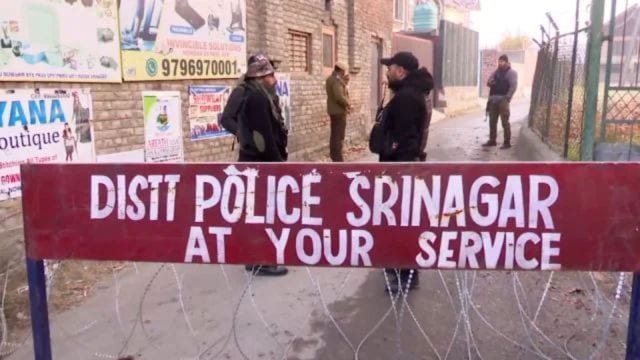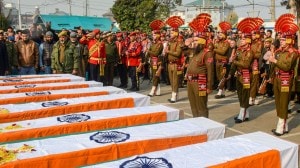Stay updated with the latest - Click here to follow us on Instagram
The Nowgam police station on Srinagar’s outskirts had been holding a large cache of case property — more than 350 kg of ammonium nitrate and several hundred kilograms of chemicals, detonators, batteries and timers. All of it had been seized from a Jaish-e-Mohammad module linked to the Red Fort blast case and was transported from Faridabad after police raids across Haryana and Delhi.
On the night of 14 November, the material exploded inside the station, killing nine people and injuring several others. Officers on duty described a sudden, deafening blast that tore through the structure and sent shockwaves across the area.
2. ‘SOPs were followed, but the material was unstable’
Police officers said the explosives had been packed in airtight containers and moved in small trucks, following standard procedure. A senior officer explained that all seized material, including weapons and explosives, has to be taken into the custody of the investigating police station for forensic examination and court proceedings.
Each station has a malkhana, the storeroom for case exhibits. If something is too dangerous to keep there, it can be shifted to the court malkhana, officials said. In this instance, the material remained in the police station.
3. Blast occurred during forensic sampling procedure
The Centre later said the blast occurred during a forensic sampling procedure.
J&K DGP Nalin Prabhat described it as an accidental explosion triggered by a large quantity of explosives that had become “unstable” over time.
4. Faces behind the numbers
On 15 November, details of the victims emerged, including police personnel and staff associated with the J&K Police.
Those killed include Inspector Peerzada Asrar-ul-Haq, SI with the Special Investigation Agency of the J&K Police; Muzaffar Ahmad Khan, Naib Tehsildar; Javid Mansoor Rather; Arshad Ahmad Shah, photographer with the Crime Branch; and Suhail Ahmad Rather, chowkidar of the Revenue Department.
5. Government announces compensation
The J&K government has announced Rs 10 lakh ex gratia for the families of each of the deceased, to be released from the Chief Minister’s Relief Fund. Those severely injured will receive ₹1 lakh.
Chief Minister Omar Abdullah, in a post on X, said the administration would extend all required support to the affected families.








